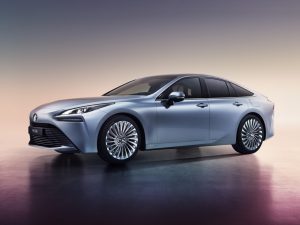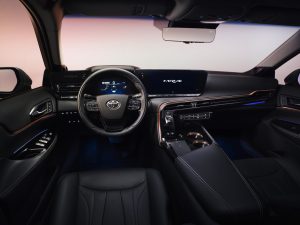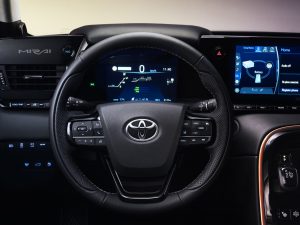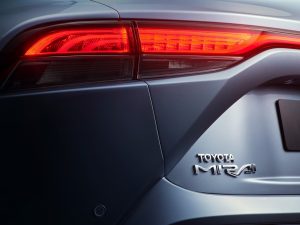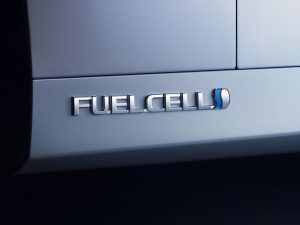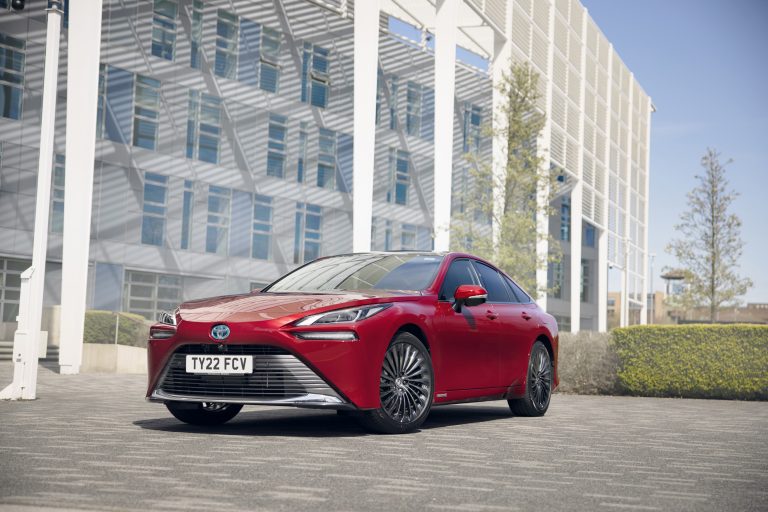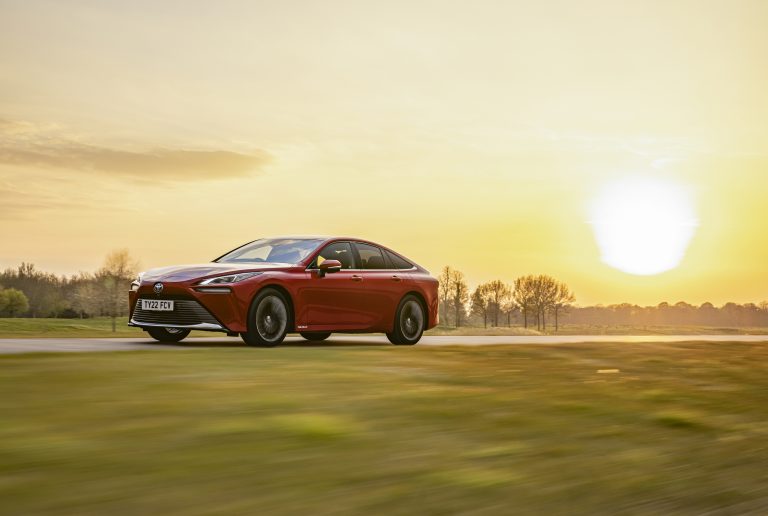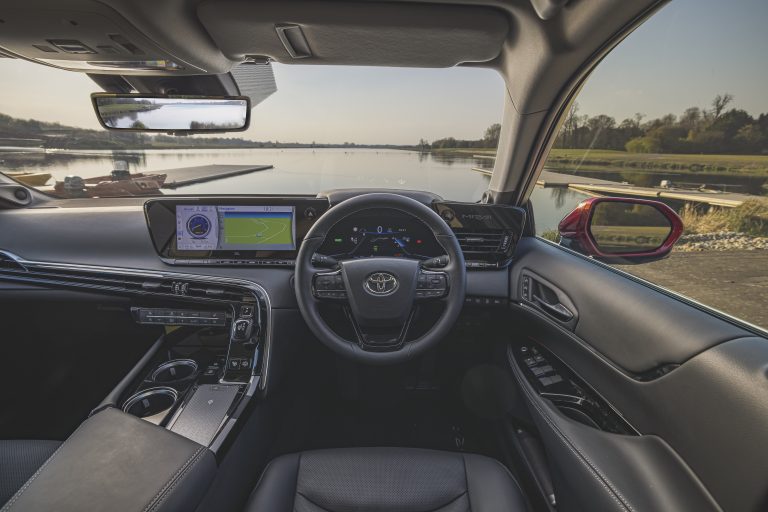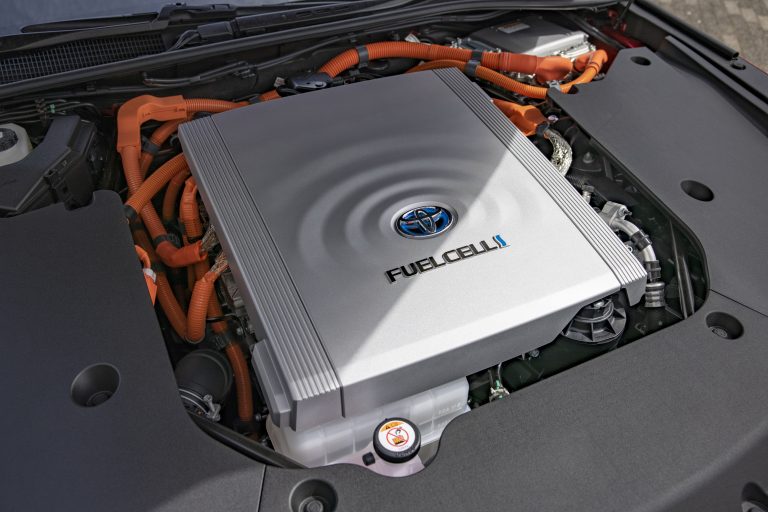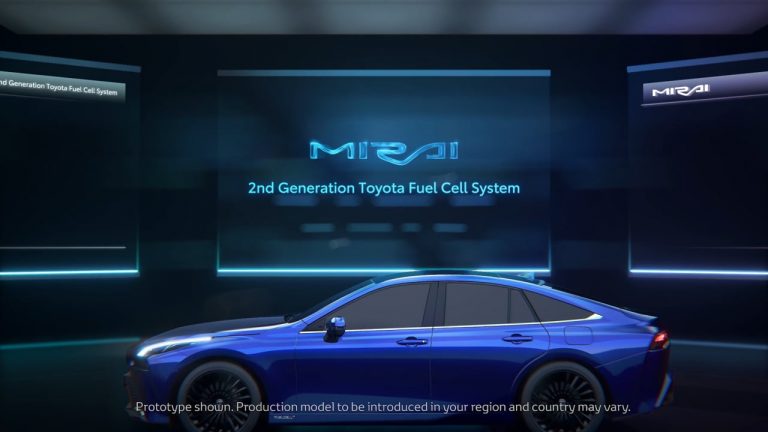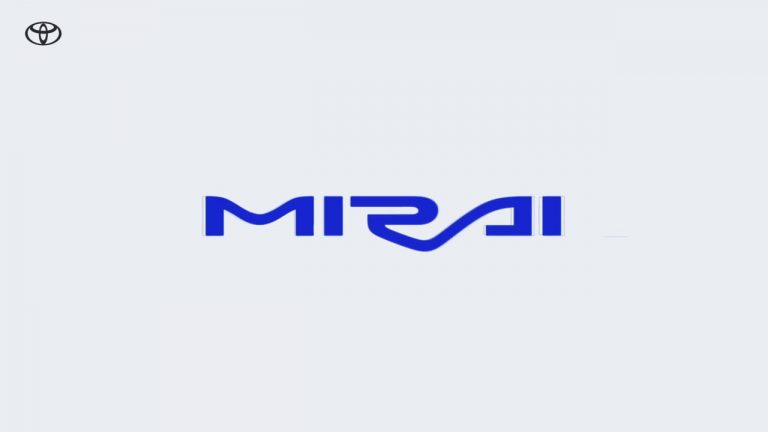Toyota Advances Towards a Hydrogen Mobility Future with Second Generation Mirai Concept
- Pushing the boundaries of hydrogen’s clean mobility potential with a driving range extended by up to 30 per cent with redesigned fuel cell system and three-tank layout
- Built on Toyota’s new modular TNGA platform, securing superior handling agility, responsiveness and design freedom
- Further development of Toyota’s fuel cell electric vehicle (FCEV) technology improves the car’s dynamics and efficiency
- Conceived as a car people will want to own because of its performance and looks, not just because it is an FCEV
Toyota led the world with the introduction of the hydrogen-powered Mirai saloon in 2014. Now it is getting ready to take its advanced zero emission fuel cell electric vehicle (FCEV) technology to new heights with the second generation model.
Mirai has been a catalyst for increasing global awareness of how a future clean and sustainable hydrogen society might be achieved. It is a car that is technically sophisticated, yet eminently practical with a driving range of around 300 miles, easy refuelling in a matter of minutes and no emissions other than pure water. Since launch, around 10,000 Mirai have been sold; at the same time, Toyota has actively supported the development of hydrogen fuel infrastructure in key markets worldwide.
This has been just the beginning: at the 2019 Tokyo Motor Show, Toyota provided an early glimpse of the advances it is making across the board with the new Mirai, in terms of technical excellence, dynamic performance, and desirable design.
Scheduled for launch in 2020, initially in Japan, North America and Europe, the new Mirai will be much more than an eco-car, showing how its FCEV technology is no barrier to creating a vehicle that is rewarding to drive and beautiful to look at.
Efficiency is still a critical area, and Toyota is targeting a 30 per cent increase in Mirai’s driving range through improvements to the fuel cell system and the use of larger on-board hydrogen tanks. There are now three tanks – one long, two short – which together increase the fuel capacity by around one kilo of hydrogen compared to the current model.
Yoshikazu Tanaka, the new Mirai’s Chief Engineer, said: “We have pursued the goal of making a car that customers will feel they want to drive all time, a car that has an emotional and attractive design and the kind of dynamic and responsive performance that can bring a smile to the driver’s face.
“I want customers to say ‘I chose the Mirai not just because it’s an FCEV, but because I simply wanted this car; it just happens to be an FCEV.’ We will continue our development work focusing on that feeling, and we hope that with the new Mirai we will be a leader in helping realise a hydrogen energy society.”
The new Mirai’s immediate impact is in its exterior design, with low lines, elegant proportions, sleek, taut bodywork and large, 20-inch diameter wheels that together generate a powerful and distinctive look.
The interior has been conceived as a simple, modern space with a warm, comfortable ambience that adds to the sense this is a car that’s genuinely enjoyable to drive and travel in. Key elements include a 12.3-inch centre display and an instrument panel that wraps around the driver. The platform and intelligent packaging allow for five seats to be provided in place of the current Mirai’s four.
The freedom to craft a more emotional and head-turning design has been one of the benefits of new Mirai being constructed on Toyota’s latest rear wheel drive modular platform, which was engineered to accommodate different powertrains – including a hydrogen fuel cell – at the outset. It further gives the new Mirai a higher degree of body rigidity, which contributes to greater agility and responsiveness, and a lower centre of gravity, which makes for nimble, rewarding handling.
As well as extending the potential driving range, improvements in the performance of the fuel cell system give the rear-wheel drive Mirai linear, smooth response when pulling away and an elegant driving feel, with unity between the driver’s throttle inputs and the car’s acceleration. Handling is light and easy on winding roads, while highway driving produces a sense of power at all speeds.
New Mirai measures 4,975mm long, 1,885mm wide, 1.470mm high and has a 2,920mm wheelbase.
ENDS

